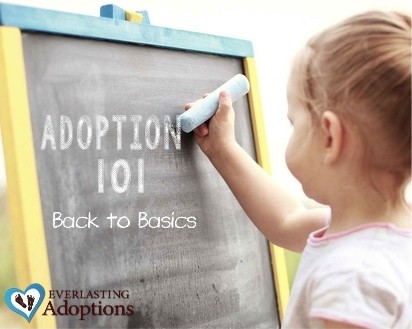November is National Adoption Awareness Month. What better time to get back to the basics of the adoption process. Adoption can be a complex and overwhelming process, so let’s break it down to the essentials you’ll need to know to get started.
Domestic vs. International Adoption
The first thing you will have to consider is whether domestic or international adoption is a better fit for your family. Aside from the obvious difference of adopting from within the United States vs. outside of the country, there are other differences in domestic and international adoptions. In a domestic adoption, you will likely be adopting a newborn, unless you pursue “foster-to-adopt”. Adopting from foster care is an extremely important and valuable way adoptions take place, but for the sake of this article, we won’t delve into that topic. If you choose to adopt internationally, it is unlikely you will be adopting a newborn baby. It is more common that you will adopt a young child from 1 to 2 years of age. You are more likely to receive detailed medical histories of birth parents in domestic adoption situations than in international adoptions. If you desire to maintain an open or semi-open relationship with birth parents, domestic adoption will likely be the best option. In both domestic and international adoptions, the cost to adopt and Home Study requirements are quite similar.
Independent Adoption or Adoption Professional
If your family decides domestic newborn adoption is the right choice, the next step will be to determine if you will go through the process independently or with the aid of an adoption professional. In an independent or private adoption, the prospective adoptive parent(s) take full responsibility for finding a birth mother through their own marketing efforts and word of mouth. They will also need to vet potential birth mothers without the knowledge and experience of an adoption professional. The major benefit of independent adoption is the cost. On average, it can be less costly to adopt this way. However, the uncertainty of wait time in independent adoptions can also make total costs uncertain. Adoptive Families determined that the average adoption cost using an adoption professional was $41,532 prior to claiming the Adoption Tax Credit. The major downsides to independent adoption are not having the expertise, access to birth mothers and networking ability that a reputable adoption professional will provide.
Getting Started
Once you’ve decided on domestic or international adoption and whether to go it independently or through an adoption professional, here is what you will need to do next.
Step 1: Choose an Adoption Professional
If you have decided to pursue domestic adoption with the aid of an adoption professional, you will need to choose which professional you want to work with. There are licensed agencies, facilitators and consultants you can choose from. Do some research to determine which professional is legally able to provide services in your state and will best be able to meet your needs. Here is a great resource where you can find state by state adoption laws. Once you have chosen a professional to work with, you will be required to complete certain paperwork and pay whatever fees are required upfront.
Step 2: Create Your Marketing Materials
Regardless of whether you choose to work with an adoption professional or not, you will need to create marketing materials to get your story out to birth mothers. Often times, paid adoption professionals will either create these materials for you or assist you in creating them. Your biggest piece of personal “advertisement” to birth mothers will be your profile, both hard copy and web-based. Take care to select high quality, professional photos and well written narrative to use for your profiles. If you are pursuing independent adoption, make sure to utilize all of the social media outlets available to you to get your name out there.
Step 3: Get a Home Study
This step really goes in conjunction with step 2. The Home Study process can take a while in some states, so it is prudent to begin this as soon as possible, especially if you are signed on with an adoption professional and your contract “clock is ticking”. All families hoping to adopt need a Home Study completed by a social worker licensed in your state. Adoptive Families explains the Home Study as, “a document that says you can be a parent. It contains the story of your life: your family and marital history, your health, your financial situation. It includes a description of your home and neighborhood, as well as personal references and discussion of any health concerns or criminal record. It also details your family relationships and your feelings about adoption, parenting, and infertility, if applicable. It ends with a social worker’s recommendation that you be allowed to adopt; sometimes it specifies how many children, and of what ages.”
Step 4: Don’t Lose Hope
This step is probably the most important, but also the most difficult. After you have chosen an adoption professional, created your profile and are Home Study approved, the next step is to wait. Waiting to be matched with a potential birth mother is usually the longest part of the entire process. After all the prep work, the waiting and uncertainty can be exhausting, but it is important that you don’t forget why you did all that work in the first place: for a baby. Try and step back, take a deep breath and find comfort in family and friends while you wait for the baby that was meant to join your family.
The staff at Everlasting Adoptions is extremely knowledgeable and available 24/7 to answer any questions you may have regarding adoption, no matter what step in the process you are at. Call us at 866.406.2702 or email carol@everlastingadoptions.com to speak to an adoption professional.

